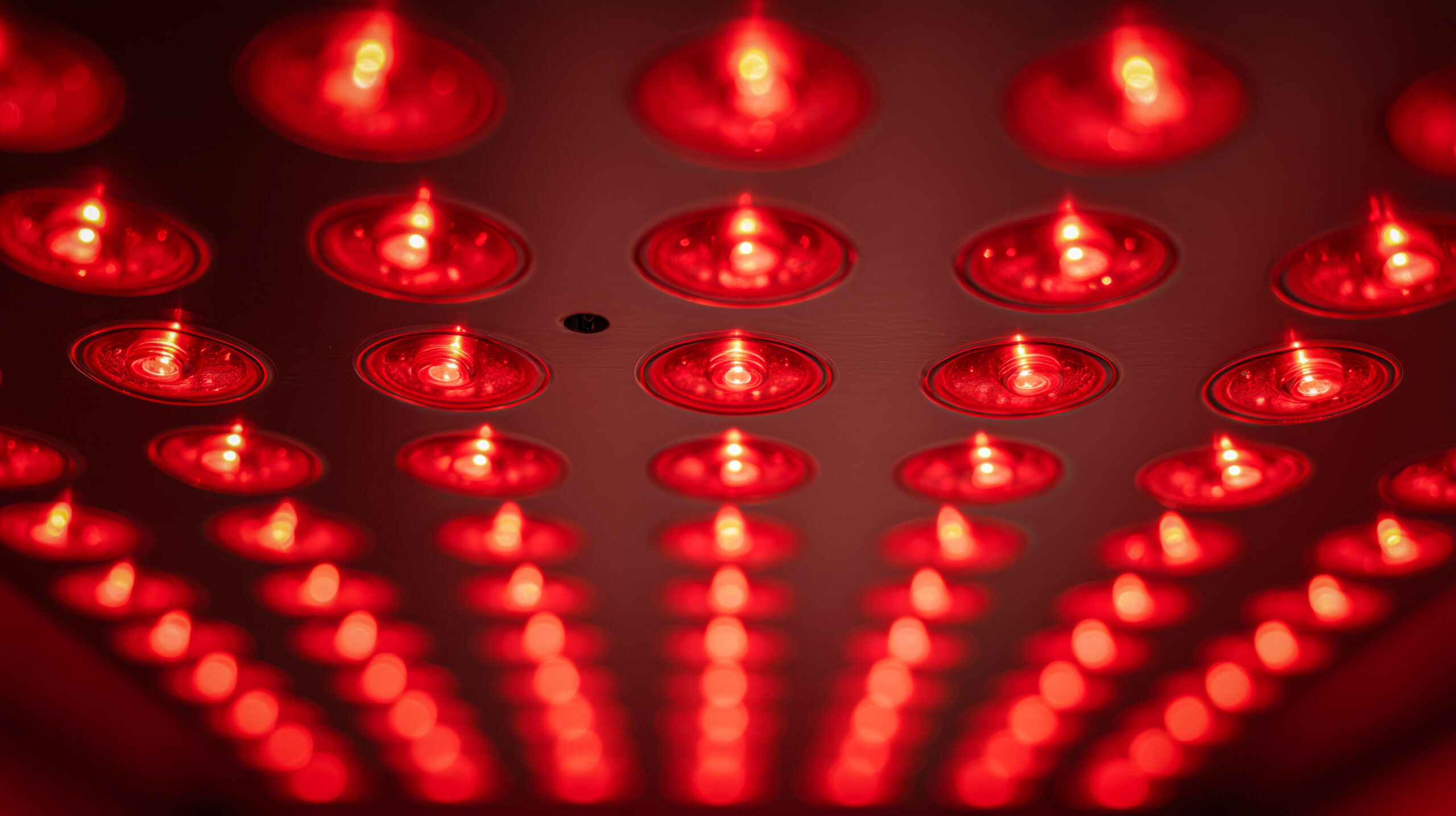Red light therapy is gaining popularity as a workout recovery method that can help restore muscles, improve complexion, and increase overall relaxation.
At MOVATI, we believe a well-rounded fitness journey is about more than just the sweat and burn of a great workout. It’s also about understanding and practicing the art of recovery.
That’s why a growing number of people are turning to the potential benefits of red light therapy (RLT), also known as photobiomodulation. This innovative treatment is making waves for its ability to help reduce inflammation, ease muscle soreness, and support faster recovery. By exposing the body to specific light waves, red light penetrates beneath the skin to help jumpstart the body’s natural healing process.
Keep reading to discover how red light therapy may be a powerful tool for achieving better fitness outcomes.
What is Red Light Therapy?
Red light therapy is an LED treatment that stimulates the body’s healing process. According to the Cleveland Clinic, you may also see it referred to as:
Low-level laser light therapy
Low-power laser therapy
Non-thermal LED light
Soft laser therapy
Cold laser therapy
Biostimulation
Photonic stimulation
Photobiomodulation
Phototherapy
The Benefits of Red Light Therapy
Recovery is an essential part of the fitness journey. It allows both the body and mind to refresh, recharge, and prepare for new challenges inside and outside the gym. Here are some of the key benefits of red light therapy as a recovery tool:
Muscle Recovery
After a workout, your muscles begin restoring themselves, which can cause inflammation and soreness. Red light therapy helps reduce soreness and inflammation by increasing blood flow and delivering fresh oxygen and nutrients to muscles. This can mean faster recovery times and less discomfort after exercise.
Improved Joint Movement
By helping ease inflammation and stiffness, red light therapy can support smoother, more comfortable joint movement.
Skin Rejuvenation
In addition to recovery benefits, red light therapy may improve skin health by boosting collagen production — the protein that helps keep skin firm, smooth, and youthful.
Enhanced Mental Well-Being
Taking time to relax and recover under the gentle glow of red light can strengthen the mind-body connection. Regular sessions provide an opportunity to rest, recharge, and give the nervous system a much-needed break.
Is Red Light Therapy Safe?
Yes. Red light therapy is gentle, safe, and non-invasive. Unlike ultraviolet (UV) light, which can be harmful in excess, red light therapy avoids these risks while delivering restorative benefits.
Its power lies in the way light waves stimulate the mitochondria — often called the “powerhouses” of our cells — to produce more energy. This boost promotes tissue repair and regeneration, making it an effective tool for fitness recovery.
How Often Should I Do Red Light Therapy?
Consistency is key. We recommend starting with three sessions per week for the first month, then continuing two to three times per week afterward. While some people notice positive changes in the first few weeks, most can expect noticeable results in 10 to 12 weeks.
Make red light therapy part of your fitness routine to help you feel your best.
Ready to Glow?
With spa-like amenities and comprehensive wellness options, MOVATI Athletic provides everything you need for a balanced and healthy lifestyle.
Disclaimer: Red Light Therapy is currently available only at MOVATI Athletic Albany Edmonton.
Join MOVATI Today and get Started with this Special Offer. Already a member? Get customized programming and improve your mobility and recovery by consulting with one of our Performance Coaches in club and complete your Game Plan Session or join seminars with one of our fitness professionals.
Story Credit: Milad Emadi, Director, Performance Coaching, MOVATI Athletic
*MOVATI’s trainers and/or consultants are not health care providers, and do not provide any medical diagnosis, treatment or advice, and any trainer and/or consultant tips are not intended to replace the advice of a health care professional.
